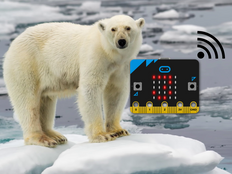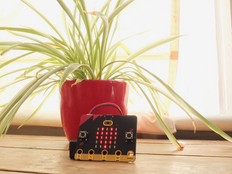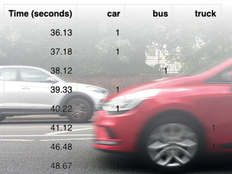第 1 步:制作
它是什么?
用您的BBC micro:bit来协助您,在您的学校操场、花园或本地公园中,数一数两种不同植物或动物都有多少。 您将学习到变量这个概念,micro:bit的按钮和LED显示屏的用法。
这两个视频介绍了你将制作什么以及如何编程:
工作原理
- 这个程序使用变量
A和B来分别存放已经数过的动物或植物的数量。 - 变量 存储计算机程序里可以改变的数字或值。
- 在程序的开头,变量A和变量B都被设为0,然后LED显示器显示一个0。 在计算机程序里,您应该像这次一样,第一次使用变量前,给它设置一个初始值。
- 当您看到您要数的第一种动物或者植物的时候,例如看到一只鸭子,按下按钮A,来让变量A里的值加一。
- 当您看到另一种要数的植物或动物时,例如看到一只鹅,按下按钮B,来让变量B里的值加一。
- 晃动您的micro:bit,让LED显示器显示变量A和变量B现在的值。
所需材料
- micro:bit或者是MakeCode模拟器
- MakeCode编辑器
- 电池组(推荐,可选)
第 2 步:编程
1from microbit import *
2
3a = 0
4b = 0
5display.show(0)
6
7while True:
8 if button_a.is_pressed():
9 a += 1
10 display.scroll(a)
11 elif button_b.is_pressed():
12 b += 1
13 display.scroll(b)
14 if accelerometer.was_gesture('shake'):
15 display.scroll('A')
16 display.scroll(a)
17 sleep(1000)
18 display.clear()
19 sleep(2000)
20 display.scroll('B')
21 display.scroll(b)第3步:完善
- 找一种方式来复位计数器,例如同时按下按钮A和按钮B。
- 用图形化的方式来表示数到的动物或植物的数量,例如用亮起多少个LED光点来表示。
- 在您数到目标数量的动物或植物时,让您的micro:bit显示代表这个动物或植物的图标或者播放代表它的音效。


